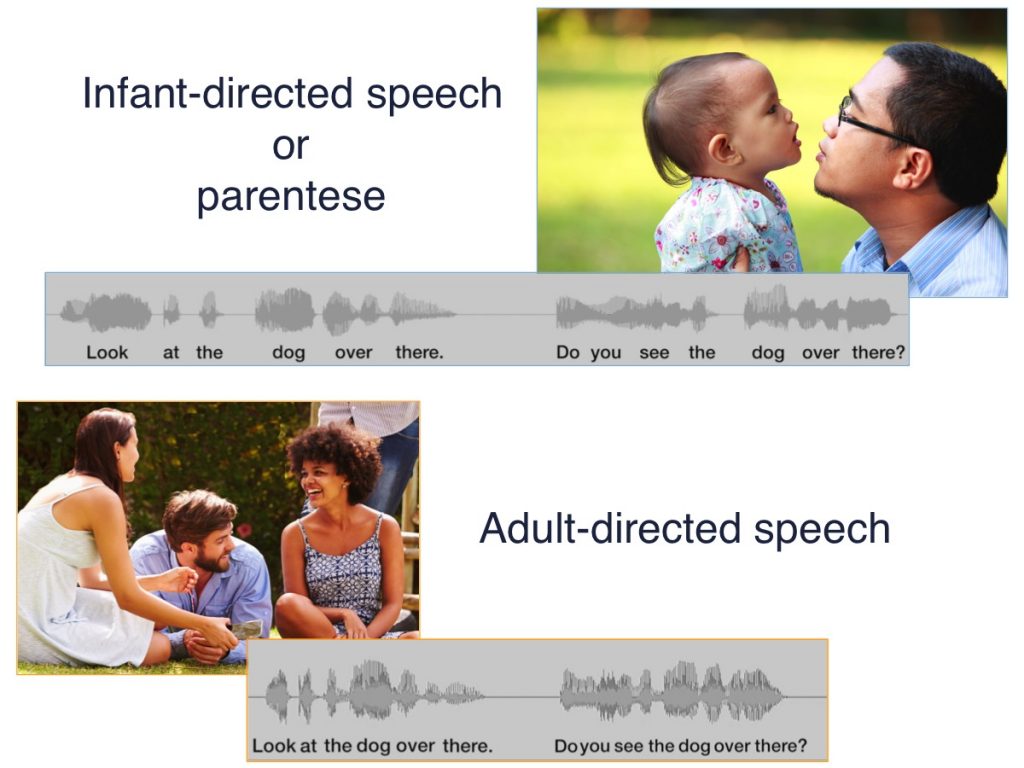
How we talk to an infant is important for infants’ growing language skills. When you talk with young children, you may use a special tone of voice, called infant-directed speech, or “parentese.” Parentese sounds different from how we talk with adults.
What differences did you notice in the two sentences? You may have noticed that the adult speaks more slowly to a baby. He also uses bigger contrasts in pitch, and exaggerates the vowels in the sentence.
Babies actually prefer to listen to parentese over adult-directed speech. There’s also research evidence that hearing parentese is linked to language learning. Babies who hear more parentese also tend to babble more, and they are better at learning novel words. Babies who hear more parentese at 12 months of age have bigger vocabularies at 24 months of age.
-
- Back-and-forth or contingent interactions
- exchanges in which a caregiver times their responses to a child’s behavior
- Imitation
- observing then reproducing, or copying, a behavior
- Infant-directed speech
- a special tone and style of speech used to talk to young children. It’s also called parentese.
- Scaffolding
- the support a caregiver provides a child to help them achieve more than they would be able to accomplish on their own